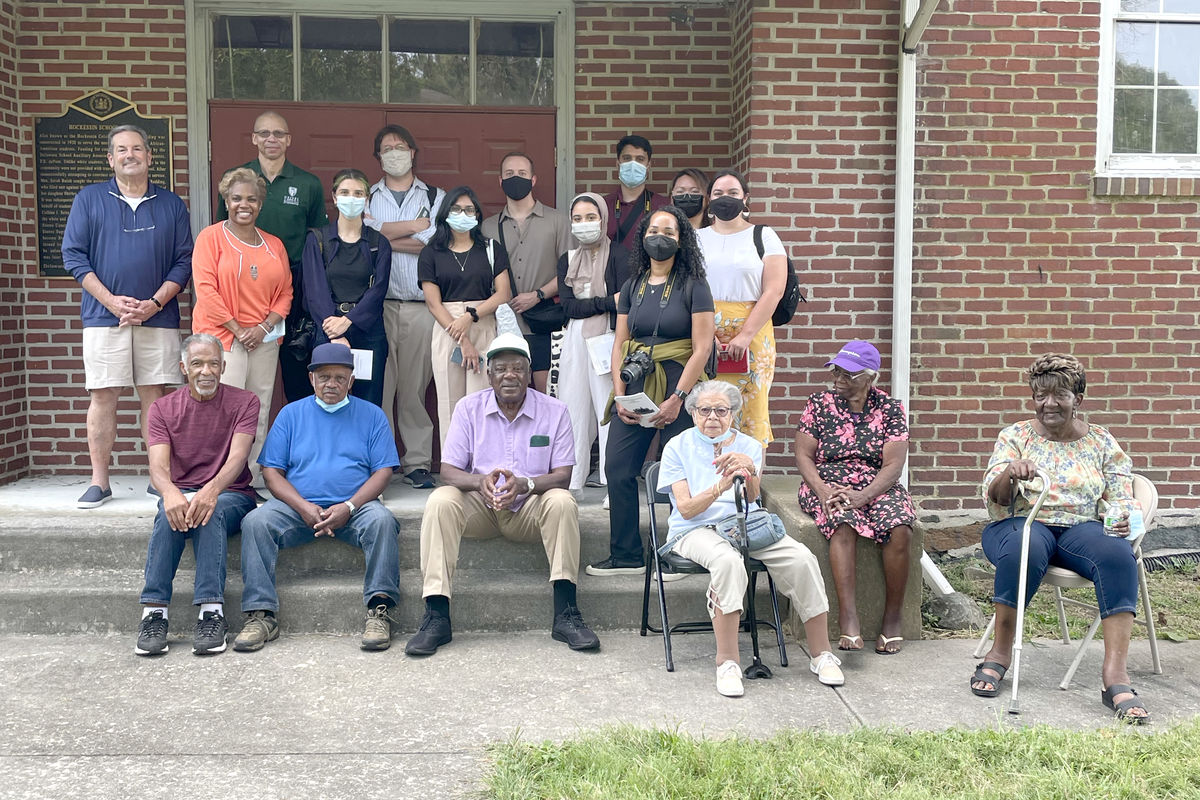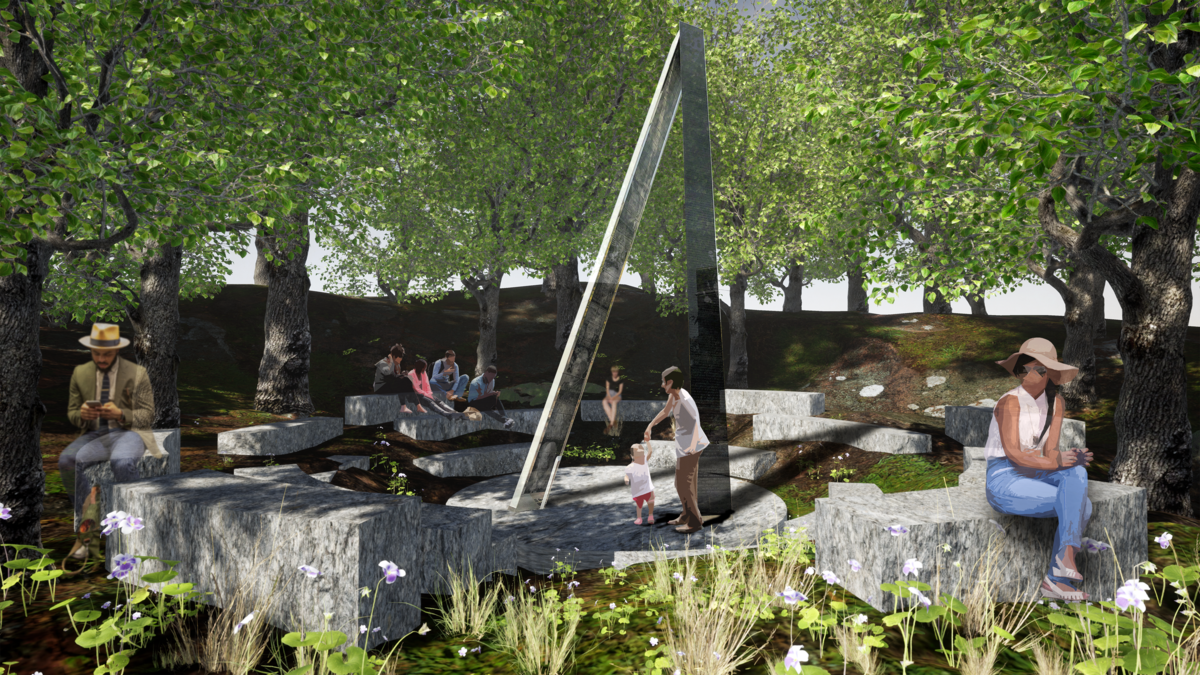November 19, 2021
Tyler Architecture Students Develop Theoretical Plans to Transform Landmark of Desegregation into Center for Diversity, Inclusion & Social Equity
This semester, graduate students in Associate Professor Rashida Ng’s Elective Architecture Studio partnered with Assistant Professor and Director of Real Estate David Wilk at the Fox School of Business on a real-world assignment to connect the past with the future.

Tyler architecture students meet with residents and former Hockessin students. Photo courtesy of Professor David Wilk.
The students were to draft theoretical second-phase plans for the Hockessin Colored School #107 in northern New Castle County, Delaware, a one-room schoolhouse built in the 1920s by Pierre S. duPont at a time when public schools in Delaware were segregated for black and white students.
Wilk is the Board Chair for The Friends of Hockessin Colored School #107, a non-profit entity was formed to save the School from sheriff’s sale in 2012 because of its monumental role in ending school desegregation. In 1950, Fred and Sarah Bulah wrote to Delaware's Governor Carvel asking for their young daughter Shirley to ride the white student’s bus which passed directly by Hockessin School #107 on the way to drop off the white students at Hockessin School #29. The Bulah’s requests were rejected, at which time they hired Attorney Louis Redding to represent them in a landmark State of Delaware Supreme Court case Bulah v. Gebhart, where in 1952, school desegregation in Delaware was declared unconstitutional. The Bulah case later become one of the foundational cases in the U.S. Supreme Court ruling in Brown v. Board of Education in 1954.
After saving the School from Sheriff’s sale, with its rich history and cultural importance, The Friends spent years trying to figure out how to reimagine the property as a place of community value and impact. In 2019, well before the social justice upheavals of 2020, the Friends Board decided to transform the former school property into a “Center for Diversity, Inclusion, and Social Equity”.
The group then partnered with New Castle County to become the 250th park in the New Castle County system. With the support of Senator Chris Coons, and U.S. Representative Jim Clyburn, the School is now part of legislation to become a National Park Service Affiliate site under Brown v. Board of Education.

John Wil Hershner (MArch '22) and Deniz Ozturk (MArch '22) propose an amphitheater on the site for exhibition, reflection, and inspiration.
A Delaware native, Wilk was fascinated by the fact that most locals were unfamiliar with the huge impact that Hockessin Colored School #107 had in Brown v. Board and the civil rights movement. After deciding to transform the School into the Center, when national events such as George Floyd, Brianna Taylor, and other social justice issues came to a head in the Spring of 2020, Wilk and the board members decision was further confirmed. The vision of transforming the vacant schoolhouse into a Center for Diversity, Inclusion, and Social Equity will allow it to serve as a neutral, safe space to teach “cultural competency”, have community conversations surrounding contemporary social issues like race, gender, ethnicity, and discrimination in a way that leads to more equitable ways of fostering inclusion. Wilk expressed this new “paradigm of human relationships” and a need for more considerate communication methods while encouraging Hockessin’s historical representation through this project.
Proponents of cross-disciplinary learning, Ng and Wilk discussed using the Hockessin redesign plan as a chance for Ng's architecture graduate students to learn about how the built environment can promote equity and justice issues in a real-world, non-insular setting. Ng and her students then visited the school, spoke with residents and former Hockessin students, and determined how they hope the school will be remembered.
Ng's assignment posed the question: “How do you pull together the modern community while honoring such a historically significant place?” In the studio, students paired off and discussed different strategies for redefining and enhancing Hockessin’s mission and educational purpose. One group suggested incorporating an artist-in-residence program, while another group considered encouraging visitors to plant something in a community garden so Hockessin’s landscape is ever-changing, reflective of the need for positive social growth. The first-phase renovation of the school by an architectural team is set to break ground before the end of 2021. Students will also present their final projects to the board for Phase 2 of the project.